Bb10.9
The Moon had a sooty face and the beginning of the Easter Island
year was when the
Sooty Tern delivered her first egg.
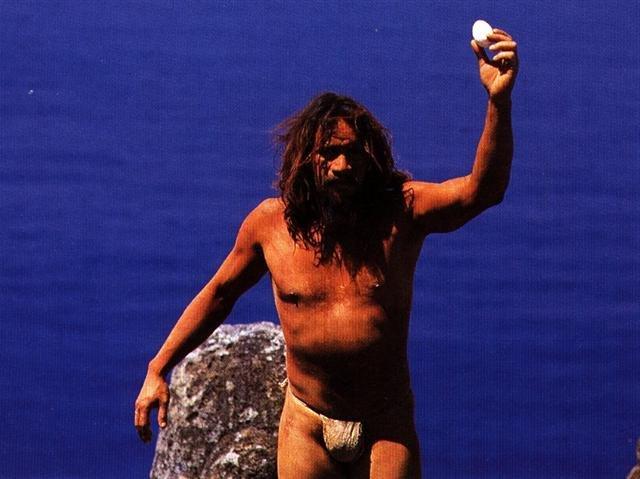
... The
sooty tern (manu tara) comes to breed in large numbers in
July or August off the southwestern point formed by the crater
of Rano-kao on three rocky islets, of which the only one
accessible to swimmers is Motu-nui ...

The first glyph in line Bb10 seems to correspond to August 10
(→ 8-10 → 80) at the place where
the Sun reached Sadalsud at the border of the left
shoulder of Aquarius, i.e. where the dry towel season was coming
to an end (9 days after μ Aquarii
had been swallowed by the mouth of the towel):




I.e., this was when in the night it could be observed that the
Sooty
Face of the 'Cinderella' Full Moon was at the right ascension
line for Al-phard, the great α
star at the neck of the speared Hydra:

 |
 |
 |
 |
|
Bb9-49 |
Bb9-50 |
Bb10-1 (377) |
Bb10-2 (378 →
Saturn) |
... The ordinary year in the
previous Roman calendar consisted of 12
months, for a total of 355 days. In
addition, a 27-day intercalary month, the
Mensis Intercalaris, was sometimes
inserted between February and March. This
intercalary month was formed by inserting 22
days after the first 23 or 24 days of
February; the last five days of February,
which counted down toward the start of
March, became the last five days of
Intercalaris. The net effect was to add 22
or 23 days to the year, forming an
intercalary year of 377 or 378 days ...
|
|
RIGHT
ASCENSION DAYS AT THE FULL MOON: |
|
No star listed (140) |
θ
Pyxidis (141.5),
MARKAB VELORUM = κ Velorum
(141.5),
AL MINHAR AL ASAD (The Nose of the Lion)
=
κ
Leonis
(141.6),
λ
Pyxidis (141.9) |
Star-25 (Horse)
/
ANA-HEU-HEU-PO-5 (Pillar
where debates were held)
ALPHARD (The Horse) =
α
Hydrae
(142.3),
ω
Leonis (142.6),
τ¹
Hydrae (142.7) |
Al Tarf-7 (The End)
ψ
Velorum (143.3),
ALTERF =
λ
Leonis,
τ²
Hydrae (143.4),
ξ
Leonis (143.5)
*102.0 = *143.4 - *41.4 |
 |
|
HELIACAL
STARS: |
|
Aug 8 |
9 |
10 (222) |
11 |
|
DAI =
ι
Capricorni
(323.5),
β
Equulei (323.8) |
γ
Pavonis (324.1),
YAN =
ζ
Capricorni
(324.6) |
Al Sa'd
al Su'ud-22 (Luckiest of the Lucky)
/
Emptiness-11 (Rat)
TSIN = 36 Capricorni
(325.2),
ALPHIRK (The Flock) =
β
Cephei
(325.7),
SADALSUD =
β
Aquarii,
ξ
Gruis (325.9) |
No star listed (326) |
|
... In China,
with Capricornus, Pisces, and a part of
Sagittarius, it [Aquarius] constituted the early
Serpent, or Turtle, Tien Yuen; and later
was known as Hiuen Ying, the Dark Warrior
and Hero, or Darkly Flourishing One, the
Hiuen Wu, or Hiuen Heaou, of the Han
dynasty, which Dupuis gave as Hiven Mao.
It was a symbol of the emperor Tchoun Hin,
in whose reign was a great deluge; but after the
Jesuits came in it became Paou Ping, the
Precious Vase. It contained three of the
sieu, and headed the list of zodiac signs as the
Rat, which in the far East was the
ideograph for 'water', and still so remains in
the almanacs of Central Asia, Cochin China, and
Japan ...
 |
|
Febr 7 (342 +
61) |
8 (404) |
9 |
10 |
|
DEC 8 (342 =
64 + 278) |
9 (*260 =
*324 - *64) |
10 (344, *261
→ 9 * 29) |
11 |
|
erua ika |
Ma te kava ra |
e kava haati ia |
|
... On
February 9 the Chorti Ah K'in,
'diviners', begin the agricultural year. Both
the 260-day cycle and the solar year are used in
setting dates for religious and agricultural
ceremonies, especially when those rituals fall
at the same time in both calendars. The ceremony
begins when the diviners go to a sacred spring
where they choose five stones with the proper
shape and color. These stones will mark the five
positions of the sacred cosmogram created by the
ritual. When the stones are brought back to the
ceremonial house, two diviners start the ritual
by placing the stones on a table in a careful
pattern that reproduces the schematic of the
universe. At the same time, helpers under the
table replace last year's diagram with the new
one. They believe that by placing the cosmic
diagram under the base of God at the center of
the world they demonstrate that God dominates
the universe. The priests place the stones in a
very particular order. First the stone that
corresponds to the sun in the eastern, sunrise
position of summer solstice is set down; then
the stone corresponding to the western, sunset
position of the same solstice. This is followed
by stones representing the western, sunset
position of the winter solstice, then its
eastern, sunrise position. Together these four
stones form a square. They sit at the four
corners of the square just as we saw in the
Creation story from the Classic period and in
the Popol Vuh. Finally, the center stone is
placed to form the ancient five-point sign
modern researchers called the quincunx
...
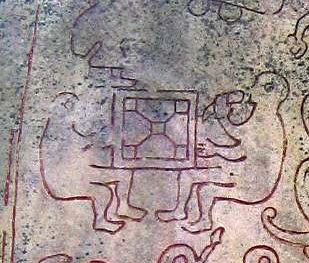 |
South of the equator the seasons were upside down
(inverted) and
therefore, when the Sun reached August 15 (227
→ 22 / 7 → 3.14 → 314 → 214
+ 100) according to the Gregorian calendar it
corresponded
to the day when Captain Cook was put to death, viz. in
2-14, February 14
(45 = 227 - 182):
 |
 |
|
 |
 |
 |
|
Bb10-3 (379) |
Bb10-4 |
Bb10-5 |
Bb10-6 |
Bb10-7 |
|
HELIACAL STARS: |
|
CASTRA = ε Capricorni
(327.2),
BUNDA (Foundation) = ξ Aquarii
(327.5)
SIRIUS (α Canis Majoris) |
Mahar sha
hi-na Shahū-26 (Western One in the Tail
of the Goat)
NASHIRA (Fortunate One) = γ Capricorni
(328.0),
ν
Oct. (328.3),
AZELFAFAGE (Horse's Foot Track) = π¹
Cygni,
κ
Capricorni (328.7) |
|
Arkat sha
hi-na Shahū-27 (Eastern One in the Tail
of the Goat)
ENIF (The Nose) =
ε
Pegasi,
ERAKIS (the Dancer) = μ Cephei
(329.2),
46 CAPRICORNI,
JIH (the Sun) =
κ
Pegasi
(329.3),
ι
Piscis Austrini (329.4),
λ
Capricorni (329.6),
ν
Cephei (329.7),
DENEB ALGIEDI =
δ
Capricorni
(329.8)
*288.0 = *329.4 - *41.4 |
θ
Piscis Austrini (330.1),
λ
Oct.
(330.7) |
KUH (Weeping)
=
μ
Capricorni (331.4),
γ
Gruis (331.5)
*290.0 = *331.4 - *41.4 |
|
12 |
Aug 13 (225) |
14
(409 - 183) |
15
(227) |
16 |
|
Febr 11 (42) |
12
(408 = 365 + 43) |
13
(226 + 183) |
2-14
(→ 14 * 29½ - 3) |
15
(411 = 350 + 61) |
|
DEC
12 |
LUCIA
(*264) |
14 |
15 |
16
(350 → 347 + 3) |
|
kua moe ma te tara
huki |
kua ati ra te kava -
kua hakaroa - ko te kava ma te hatu huri |
i vai o amo
hia |
eko te maitaki ma te
hokohuki ku hura
hia |
ki te vai o amo
hia |
|
Amo. To carry on
one's shoulders: O Yetú i-amo-ai te
tatauró ki ruga ki-te maúga Kalvario.
Jesus carried his cross up to the
Calvary. Amoga, bundle; to tie in
a bundle: he-amoga i te hukahuka,
to tie a bundle of wood. Vanaga. 1. A
yoke, to carry; amoga, burden,
load. 2. To bend, to beat a path.
Churchill. Âmo. 1. To clean, to
clean oneself: he-âmo i te umu,
to clean the earth oven; ka-âmo te
hare, ka haka-maitaki, clean the
house, make it good; he-âmo i te
ariga, to clean one's face wetting
it with one's hand. 2. Clear;
ku-âmo-á te ragi, the sky is clear.
3. To slip, to slide, to glide (see
pei-âmo). Ámoámo, to lick up,
to lap up, to dry; to slap one's body
dry (after swimming or bathing):
he-âmoâmo i te vaihai rima.
Vanaga. Amoamo. 1. To feed, to
graze. 2. To spread, to stretch (used of
keete). Churchill.
... In China, every year about the
beginning of April, certain officials
called Sz'hüen used of old to go
about the country armed with wooden
clappers. Their business was to summon
the people and command them to put out
every fire. This was the beginning of
the season called Han-shih-tsieh,
or 'eating of cold food'. For three days
all household fires remained extinct as
a preparation for the solemn renewal of
the fire, which took place on the fifth
or sixth day after the winter solstice
[Sic!]
...

...
Once upon a time there was an old woman
who owned a great potato field where she
planted her potatoes in spring and
harvested them in autumn. She was famous
all around for her many varieties of
wonderful potatoes, and she had enough
of them to sell at the market place. She
planted her potatoes 7 in a row, placing
her foot in front of her as a measure
from one potato to the next. Then she
marked the place with a bean - which
would also give nourishment to the
surrounding potatoes. Next she changed
variety and planted 7 more followed by
another bean, and this was the pattern
she followed until all her 214 varieties
had been put down in their proper
places. She had drawn a map which she
followed and from where each sort of
potato could be located at the proper
time for its harvest. I was fascinated,
when I happened to stumble on this
Swedish TV program, because my 'once
upon a time' was now and 214 (= 2 * 107)
was surely no coincidence. She knew what
she was doing. Let's therefore count:
214 * 7 (potatoes) + 213 (beans) = 1711.
So what? Probably because 1711 = 59 * 29
...
... Early on Sunday morning, 14 February
1779, Captain Cook went ashore with a
party of marines to take the Hawaiian
king, Kalaniopu'u, hostage against the
return of the Discovery's cutter, stolen
the night before in a bold maneuver - of
which, however, the amiable old ruler
was innocent. At the decisive moment,
Cook and Kalaniopu'u, the God and the
King, will confront each other as cosmic
adversaries. Permit me thus an
anthropological reading of the
historical texts. For in all the
confused Tolstoian narratives of the
affray - among which the judicious
Beaglehole refuses to choose - the one
recurrent certainty is a dramatic
structure with the properties of a
ritual transformation. During the
passage inland to find the king, thence
seaward with his royal hostage, Cook is
metamorphosed from a being of veneration
to an object of hostility. When he came
ashore, the common people as usual
dispersed before him and prostrated face
to earth; but in the end he was himself
precipitated face down in the water by a
chief's weapon, an iron trade dagger, to
be rushed upon by a mob exulting over
him, and seeming to add to their own
honors by the part they could claim in
his death: 'snatching the daggers from
each other', reads Mr. Burney's account,
'out of eagerness to have their share in
killing him'. In the final ritual
inversion, Cook's body would be offered
in sacrifice by the Hawaiian King ...
... The Hawaiian woman who was
interviewed chuckled because the
assassination of Captain Cook coincided
with the day we have named All
Hearts' Day - when in February 14
(2-14) the war-god Kuu returned
to power ...
 |
|
RIGHT
ASCENSION DAYS AT THE FULL MOON: |
|
A Hydrae
(144.1)
VEGA (α Lyrae) |
Creation of our present world
UKDAH (Knot) =
ι
Hydrae (145.4),
κ
Hydrae (145.5),
SUBRA =
ο
Leonis
(145.8)
ALPHEKKA MERIDIANA
*104.0 = *145.4 - *41.4 |
|
5 Imix 9 Kumk'u
Rishu A.-13 (Head
of the Lion)
ψ Leonis (146.4),
RAS ELASET AUSTRALIS
(Southern Head of the Lion)
= ε Leonis
(146.6)
*105.0 = *146.4 - *41.4 |
VATHORZ PRIOR = υ Carinae
(147.9)
|
υ¹
Hydrae (148.4),
RAS ELASET BOREALIS (Northern Head of
the Lion) =
μ
Leonis
(148.7)
*107.0 = *148.4 - *41.4 |
|
12 |
Aug 13 (225) |
14
(409 - 183) |
15
(227) |
16 |
I have followed the leads and therefore beyond Bb10-2
(glyph number 378 →
6 * 63) I have chosen to elevate the Sun positions
according to the situation on Easter Island
where the Sooty Tern ideally should have arrived
in August 12 (224 →
7 * 32 → 732 = 2 * 366). 8-14 = 2-14 +
6-0.
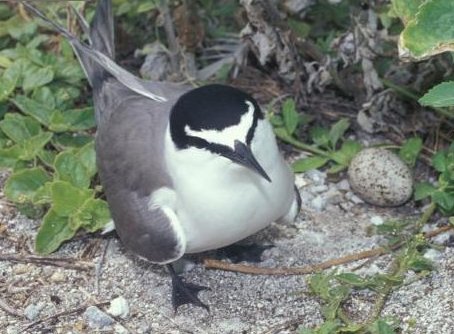
 |
 |
 |
|
Bb10-8 (384) |
Bb10-9 |
Bb10-10 |
|
No star listed (300 + 32) |
η Piscis Austrini (333.4)
*292.0 = *333.4 - *41.4 |
Rooftop-12 (Swallow)
22h (334.8)
KAE UH (Roof) = ο Aquarii
(334.0),
AL KURHAH (White Spot) = ξ Cephei
(334.4),
SADALMELIK (Lucky King) = α Aquarii,
AL DHANAB (The Tail) = λ Gruis
(334.6),
ι Aquarii, ν Pegasi (334.7)
*293.0 = *334.4 - *41.4 |
 |
|
Aug 17 (229) |
18 |
19 |
|
RIGHT ASCENSION DAYS AT THE FULL
MOON: |
|
TSEEN KE (Heaven's Record) =
φ
Velorum
(149.9) |
ν Leonis (150.1), π Leonis (150.6) |
υ² Hydrae (151.8) |
|
Heaven's Record is
the half hidden star which arrives
after the pale shield marked with a
triangular delta (Δ)
at the border (Φ)
to the Oak named
Robur Carolinum:
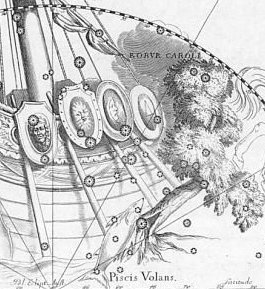 |
|
ko te ravarava
ku moe |
eaha te goe
moe |
ki te henua -
e tagata era |
|
Goe. Milky
Way. Vanaga. |
This was when north of the equator the stars
would gradually have become more visible as the nights
grew longer.
 |
 |
|
Bb10-11 (808) |
Bb10-12 (388) |
|
ι
Pegasi (335.0),
ALNAIR
(The Bright One) =
α
Gruis
(335.1),
μ
Piscis Austrini,
υ
Piscis Austrini (335.3),
WOO (Pestle) =
π
Pegasi
(335.7),
BAHAM =
θ
Pegasi (Good Luck of the Two Beasts),
τ
Piscis Austrini (335.8) |
ζ
Cephei (336.2),
λ
Cephei (336.3), -/270 Lac.
(336.7), λ Piscis Austrini (336.8) |
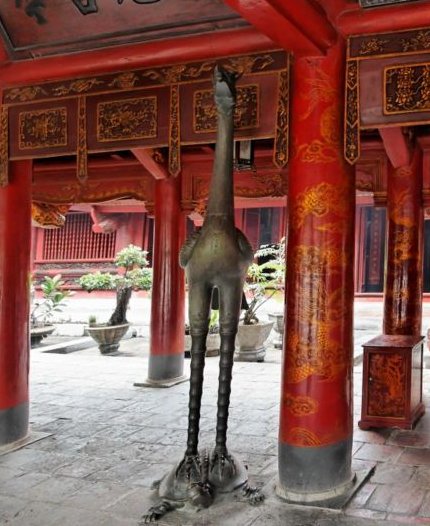
... The
arrangement of the southern birds
according to Hevelius shows Apus
below the tail bird Pavus
(Peacock), which in turn has the
beak bird (Tucana) in front:
...The title is an appropriate one
for enduring stars, as this bird [Pavus]
has long before been a symbol of
immortality, fancifully said to be
from the annual renewing of its
feathers; but this is common to all
birds, and the symbolism probably is
from the fact that its starry tail
rendered the peacock sacred to Juno,
the immortal queen of the heavens,
and thus in classical times, as in
the days of chivalry, an object of
adjuration. This bird was still
further astronomical in originally
having been Argos, the builder of
the ship Argo, who was changed by
Juno to a peacock when his vessel
was transformed to the sky, where he
has since rejoined her ... Above the
Toucan the astronomer's bird (Grus)
stretched his long neck high with
the bird on fire (Phoenix) in
front, from where the Eridanus River
originated - which was at the
opposite side of the sky compared to
where the Hydra ended at the black
bird Corvus ...
... It must be admitted, however,
that the task of raising the sky was
not always a long and arduous one.
In the New Hebrides of Melanesia the
sky was formerly so low overhead
that a woman who was pounding roots
in a mortar happened to strike the
sky with her pestle. Greatly annoyed
at the interruption she looked up
and cried angrily, 'Go on up
higher!' Whereat the sky meekly
obeyed her. What actually happened
probably was that the woman struck
the low house roof with her pestle
and cried angrily to her husband,
'If you don't raise that roof
higher, I won't cook you another
meal!' thus giving a strong impuls
to the development of the science of
architecture ... |
|
Aug 20 (→
8
* 29) |
21 (233) |
|
RIGHT ASCENSION DAYS AT THE FULL
MOON: |
|
Al Jabhah-8
(Forehead) /
Maghā-10
(Bountiful) /
Sharru-14
(King)
10h (152.2)
AL JABHAH =
η
Leonis (152.4),
REGULUS
(Little KIng) =
α
Leonis
(152.7)
*111.0 = *152.4 - *41.4 |
λ Hydrae (153.2) |
|
e ka pipiri
raua |
mai tae heu
hia |
|
Piri. 1. To join (vi,
vt); to meet someone on the road;
piriga, meeting, gathering. 2.
To choke: he-piri te gao. 3.
Ka-piri, ka piri,
exclamation: 'So many!' Ka-piri,
kapiri te pipi, so many
shellfish! Also used to welcome
visitors: ka-piri, ka-piri!
4. Ai-ka-piri ta'a me'e ma'a,
expression used to someone from whom
one hopes to receive some news, like
saying 'let's hear what news you
bring'. 5. Kai piri, kai piri,
exclamation expressing: 'such a
thing had never happened to me
before'. Kai piri, kai piri, ia
anirá i-piri-mai-ai te me'e rakerake,
such a bad thing had never happened
to me before! Piripiri, a
slug found on the coast, blackish,
which secretes a sticky liquid.
Piriu, a tattoo made on the back
of the hand. Vanaga. 1. With, and.
2. A shock, blow. 3. To stick close
to, to apply oneself, starch;
pipiri, to stick, glue, gum;
hakapiri, plaster, to solder;
hakapipiri, to glue, to gum, to
coat, to fasten with a seal;
hakapipirihaga, glue. 4. To
frequent, to join, to meet, to
interview, to contribute, to unite,
to be associated, neighboring;
piri mai, to come, to assemble,
a company, in a body, two together,
in mass, indistinctly; piri
ohorua, a couple; piri
putuputu, to frequent; piri
mai piri atu, sodomy; piri
iho, to be addicted to;
pipiri, to catch; hakapiri,
to join together, aggregate, adjust,
apply, associate, equalize, graft,
vise, join, league, patch, unite.
Piria; tagata piria,
traitor. Piriaro (piri
3 - aro), singlet,
undershirt. Pirihaga, to
ally, affinity, league. Piripou
(piri 3 - pou),
trousers. Piriukona,
tattooing on the hands. Churchill.
Heu.
Offspring of parents from two
different tribes, person of
mixed descent, e.g. father Miru,
mother Tupahotu. Heuheu,
body hair (except genitals
and armpits). Vanaga. 1. Heheu;
ivi heheu, the cachalot, bone
needle; hakaheu, spade, to
shovel, to grub up, to scratch the
ground, to labor; rava
hakaheu, laborious, toilsome. 2.
Hakaheu, affair. Churchill.
M. Heu, to separate, to pull
asunder; the eaves of a house;
heu, a single hair; hau.
to hew; heru, to comb;
huru, hair on the body; down;
feathers; maheu, scattered;
maheuheu, shrubs; mahuru,
scrub; heuea, to be
separated. Text Centre.
Nonoma
ran, he quickly went to Te
Hikinga Heru (a ravine in the
side of the crater Rano Kau)
and looked around. There he saw the
double canoe way out near the
(offshore) islets, and the two
(hulls of the canoe) were lashed
together.
.jpg) |
When the Sun was at the
star named Lucky King (Sadalmelik) - at the
right shoulder of Aquarius - then the position of the
star Little
King (Regulus) was at the Full Moon. South of the
equator, on Easter Island, it ought to have been the
Little King star who was lucky:
|
REGULUS
(*152) |
*183 |
SADALMELIK (*335) |
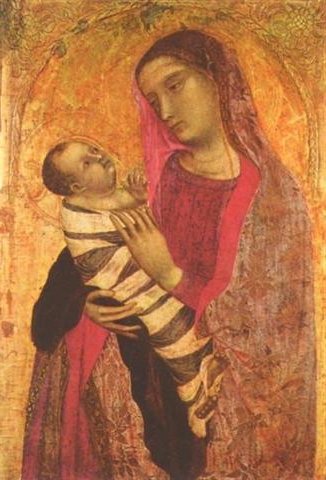
8 days would then follow before the Rain star was reached by the
Sun:
 |
 |
|
Bb10-13 |
Bb10-14 (390) |
|
μ
Gruis (337.0),
ε
Cephei (337.2), 1/325 Lac. (337.3),
ANCHA (Hip) =
θ
Aquarii
(337.4),
ψ
Oct.
(337.5),
α Tucanae (337.9)
*296.0 = *337.4 - *41.4 |
Al Sa'ad al Ahbiyah-23 (Lucky Star of Hidden
Things) /
Shatabisha-25 (Comprising a Hundred
Physicians)
ε
Oct. (338.1),
ρ Aquarii
(338.2),
2/365 Lac. (338.5),
SADACHBIA =
γ
Aquarii
(338.6),
π
Gruis (338.9) |
|
... However, the dislocation [of
the hip of Tantalus - like that of other sacred kings] may have been
produced - and it is likely that still another method [than '...
produced by wide abduction of the thighs ... when a person embarking
in a boat remains undecided whether to get in or remain on land.']
was practised on a hill-top, not beside a river - there was a taboo
in Canaan on eating the flesh around the thigh-bone, as is
expressely stated in Genesis in the story of Jacob's
wrestling at Peniel ... |
|
Aug 22 |
23 (235) |
|
RIGHT ASCENSION DAYS AT THE FULL
MOON: |
|
ADHAFERA = ζ Leonis,
TANIA BOREALIS (Northern Gazelle) = λ Ursae Majoris, SIMIRAM = ω
Carinae
(154.7) |
ALGIEBA (The Mane) =
γ
Leonis,
q Carinae (155.5) |
| ma te
inoino ma te hoi hatu |
ihe hokohuki ka rere te
manu |
|
|
 |
 |
 |
|
Bb10-15 |
Bb10-16 (392) |
Bb10-17 |
|
β/172
Lac. (339.2),
4/1100
Lac. (339.4),
π
Aquarii
(339.5)
*298.0 = *339.4 -
*41.4
CASTOR (α
Gemini) |
δ
Tucanae (340.1), ρ Cephei (340.2), ν Gruis (340.3),
ζ Aquarii, δ Gruis (340.4),
5/1100 Lac. (340.7), σ Aquarii, 6/650 Lac. (340.9)
*299.0 = *340.4 -
*41.4
PROCYON (α
Canis Minoris) |
υ
Oct. (341.0),
α/91
Lac. (341.1),
HOMAN (Hero) =
ζ
Pegasi,
β
Piscis Austrini (341.2),
ν
Tucanae
(341.5), υ Aquarii
(341.9) |
|
Aug 24 (236) |
25 |
26 |
|
RIGHT ASCENSION DAYS AT THE FULL
MOON: |
|
TANIA AUSTRALIS (Southern Gazelle) =
μ
Ursae Majoris
(156.0),
GHOST OF JUPITER = NGC3242 Hydrae
(156.8) |
Extended Net-26b (Ox)
μ
Hydrae
(157.1) |
Maru-sha-arkat-Sharru-15 (4th Son behind
the King)
SHIR (Possessing Luminous Rays) =
ρ
Leonis
(158.9) |
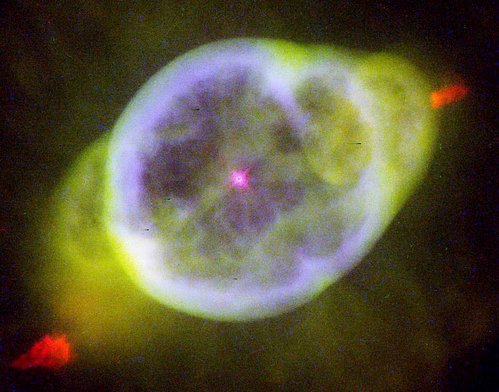 |
| i te
inoino a to hato |
i te hoko huki ka tara ia |
ma te hokohuki |
| |
 |
 |
 |
| Bb10-18 |
Bb10-19 |
Bb10-20 (396) |
|
η
Aquarii
(342.1),
σ
Gruis (342.4),
SITULA
(Water-jar) =
κ
Aquarii
(342.7)
*301.0 = *342.4 - *41.4 |
ε
Piscis Austrini (343.5), ο Pegasi, β Gruis (343.8) |
ρ
Gruis (344.0),
MATAR (Rain) = η Pegasi
(344.2), η Gruis (344.6), β Oct. (344.7) |
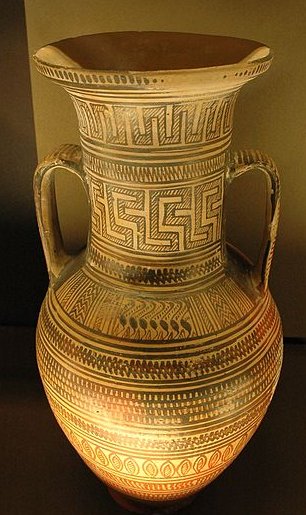 |
|
Aug 27 |
28 (240) |
29 |
|
ST JOHN'S DAY |
JUNE 25 (240 -
64) |
26 (177 = 354 / 2) |
|
RIGHT ASCENSION DAYS AT THE FULL
MOON: |
|
p
Carinae (159.3) |
φ
Hydrae (160.3) |
No star listed (161) |
|
Febr 26 |
27 (240 + 183 = 423) |
28 |
|
CHRISTMAS EVE |
DEC 25 (423 -
64) |
26 (360) |
| ka
inoino ma hatu huri |
ka
hahaú hia |
ma te
maitaki |
... That the Sun-gods Dionysus, Apollo and Mithras were
all also reputedly born at the Winter solstice is well
known, and the Christian Church first fixed the Nativity
feast of Jesus Christ at the same season, in the year
A.D. 273 [→ 3 * 91]. St. Chrysostom, a century later,
said that the intention was that 'while the heathen were
busied with their profane rites the Christians might
perform their holy ones without disturbance', but
justified the date as suitable for one who was 'the Sun
of Righteousness'. Another confirmation of the date is
that Zeus was the son of Cronos, whom we have securely
identified with Fearn, or Bran, the god of the F month
in the Beth-Luis-Nion. If one reckons back 280 days from
the Winter Solstice, that is to say ten months of the
Beth-Luis-Nion calendar, the normal period of human
gestation, one comes to the first day of Fearn.
(Similarly, reckoning 280 days forward from the Winter
Solstice, one comes to the first day of the G month,
Gore, sacred to Dionysus; Dionysus the vine and
ivy-god, as opposed to the Sun-god, was son to Zeus.)
Cuchulain was born as the result of his mother's
swallowing a may-fly; but in Ireland may-flies often
appear in late March, so his birthday was probably the
same ...
There are 42 glyphs in line Bb10, and 6 days after
the Rain star the Sun reached right ascension day
*350 (→ 23h):
 |
 |
 |
 |
 |
 |
|
Bb10-21 |
Bb10-22 |
Bb10-23 |
Bb10-24
(400) |
Bb10-25 |
Bb10-26 |
|
λ Pegasi (345.0), ξ Pegasi (345.1), ε Gruis
(345.3), τ Aquarii (345.7), ξ Oct. (345.8),
μ Pegasi (345.9) |
ι Cephei (346.0), λ Aquarii, γ Piscis
Austrini, σ Pegasi (346.5) |
SCHEAT AQUARII = δ
Aquarii
(347.0),
ρ
Pegasi (347.2),
δ
Piscis Austrini (347.4),
FOMALHAUT (Mouth of the Fish) =
α
Piscis Austrini,
τ
Gruis (347.8)
*306.0 = *347.4 - *41.4 |
FUM AL SAMAKAH (Mouth of the
Fish) =
β
Piscium
(348.3),
ζ
Gruis (348.5),
ο
Andromedae (348.9) |
Al Fargh al
Mukdim-24 (Fore Spout) /
Purva
Bhādrapadā-26 (First of the Blessed Feet)
/
House-13 (Pig)
SCHEAT PEGASI =
β
Pegasi,
π
Piscis Austrini (349.3),
κ
Gruis (349.4),
MARKAB PEGASI =
α
Pegasi
(349.5)
*308.0 = *349.4 - *41.4 |
23h (350.0 = 167.4 + 182.6)
υ, θ Gruis (350.0), π Cephei (350.6), ι
Gruis (350.9) |
.jpg) |
|
Aug 30
(60 + 182) |
31 |
Sept 1 |
2 (245 =
80 + 165) |
3 |
4 |
|
JUNE 27 |
28 |
29 (180) |
30 |
JULY 1 |
2 |
|
March 1
(60) |
2 |
3 |
4 (181 - 118) |
5 |
6 (65) |
|
koia kua oho |
kua rave i to henua
te moa gutupikopiko - ka oho ka rere |
ki te manu vaero
rua ma te hokohuki |
ki te ika |
|
Gutu. 1. Lips, mouth,
beak, snout (goutu); gutu ahu,
swollen lip; gutu hiti, thick lip;
gutu mokomoko, pointed lip; gutu
no, vain words; gutu pakapaka,
scabbed lips; gutu raro, lower lip;
gutu ruga, upper lip. Gutugutu,
snout. P Pau.: gutu, lip, beak, bill.
Mgv.: gutu, the chin, the mouth of a
fish. Mq.: nutu, beak, snout. Ta.:
utu, lip, mouth, beak, snout.
Gutupiri, attentively. Gututae,
attentively; gututae mekenu, a small
mouth. Gututika, tattoing on the
lips. 2. Pau.: Gutuafare, to save, to
economize. Ta.: utuafare, family,
residence. 3. Pau.: Guturoa, to
grimace, to pout. Mgv.: guturoa, to
grimace. Churchill.
Pikopiko, crooked;
hoe pikopiko, pruning knife; veo
pikopiko, arrow that flies ill.
Churchill. |
The ancient arrow of time was crooked, because the
north pole was no longer ruled by Ursa
Major (Itzam-Yeh).
... They go inland at the
land. The child nursed and tended grows up,
is able to go and play. Each day he now goes
off a bit further away, moving some distance
away from the house, and then returns to
their house. So it goes on and the child is
fully grown and goes to play far away from
the place where they live. He goes over to
where some work is being done by a father
and son. Likāvaka is the name of the
father - a canoe-builder, while his son is
Kiukava.
Taetagaloa
goes right over there and steps forward to
the stern of the canoe saying - his words
are these: 'The canoe is crooked.' (kalo
ki ama). Instantly
Likāvaka is enraged at the words of the
child. Likāvaka says: 'Who the hell
are you to come and tell me that the canoe
is crooked?'
Taetagaloa
replies: 'Come and stand over here and see
that the canoe is crooked.' Likāvaka
goes over and stands right at the place
Taetagaloa told him to at the stern of
the canoe. Looking forward, Taetagaloa
is right, the canoe is crooked. He slices
through all the lashings of the canoe to
straighten the timbers. He realigns the
timbers. First he must again position the
supports, then place the timbers correctly
in them, but Kuikava the son of
Likāvaka goes over and stands upon one
support. His father Likāvaka rushes
right over and strikes his son Kuikava
with his adze. Thus Kuikava
dies. Taetagaloa
goes over at once and brings the son of
Likāvaka, Kuikava, back to life.
Then he again aligns the supports correctly
and helps Likāvaka in building the
canoe. Working working it is finished
...
 |
 |
 |
 |
 |
 |
 |
|
Bb10-27 |
Bb10-28 |
Bb10-29 |
Bb10-30 |
Bb10-31 |
Bb10-32
(408) |
Bb10-33 |
|
SIMMAH = γ Piscium
(351.7) |
φ Aquarii (352.0), ψ Aquarii
(352.4), χ Aquarii (352.6), γ
Tucanae (352.8) |
ο Cephei (353.3),
KERB (Bucket Rope) = τ Pegasi
(353.6) |
κ Piscium (354.2), θ Piscium (354.4), υ Pegasi (354.9)
*313.0 = *354.4 - *41.4 |
ο Gruis,
Snowball Nebula = NGC7662
Andromedae
(355.0), τ Oct. (355.3) |
No star listed (356) |
ι Phoenicis (357.3), ι Piscium (357.4), λ Andromedae (357.9)
*316.0 = *357.4 - *41.4 |
 |
|
Sept 5 (248) |
6 |
7 |
8 |
9 |
10 |
11 (254) |
|
JULY 3 (184) |
4 |
5 |
6 |
7 (188) |
8 |
9 |
|
ka hoko
ka rave - ta au o te ika |
o te
hau tea |
ma to
ua |
o te
inoino ma te hatu huri |
e nuku
noho vai |
ko te
marama - kua katea i ruga |
koia ra
ko te hiro ma te nuki - kua tau
te ragi i ruga |
|
Hiro. 1.
A deity invoked when praying for
rain (meaning uncertain). 2. To
twine tree fibres (hauhau,
mahute) into strings or
ropes.
Ohirohiro, waterspout
(more exactly pú ohirohiro),
a column of water which rises
spinning on itself.
Vanaga. To spin, to twist. P
Mgv.: hiro, iro,
to make a cord or line in the
native manner by twisting on the
thigh. Mq.: fió, hió,
to spin, to twist, to twine.
Ta.: hiro, to twist. This
differs essentially from the
in-and-out movement involved in
hiri 2, for here the
movement is that of rolling on
the axis of length, the result
is that of spinning. Starting
with the coir fiber, the first
operation is to roll (hiro)
by the palm of the hand upon the
thigh, which lies coveniently
exposed in the crosslegged
sedentary posture, two or three
threads into a cord; next to
plait (hiri) three or
other odd number of such cords
into sennit. Hirohiro, to
mix, to blend, to dissolve, to
infuse, to inject, to season, to
streak with several colors;
hirohiro ei paatai, to salt.
Hirohiroa, to mingle;
hirohiroa ei vai, diluted
with water. Churchill. Ta.:
Hiro, to exaggerate. Ha.:
hilohilo, to lengthen a
speech by mentioning little
circumstances, to make nice
oratorial language. Churchill.
Whiro
'Steals-off-and-hides'; also [in
addition to the name of Mercury]
the universal name for the 'dark
of the Moon' or the first day of
the lunar month; also the deity
of sneak thieves and rascals.
Makemson. |
Glyph line Bb10 is ending at the
right ascension line of Algenib
Pegasi:
 |
 |
|
Bb10-34 (255 + 155) |
Bb10-35 |
|
λ Piscium (358.0),
MANUS
CATENATA
= ι Andromedae
(358.1),
θ Phoenicis, ALRAI = γ
Cephei (358.4),
κ Andromedae (358.7)
*358.4 - *41.4 = *317.0 |
ω Aquarii (359.2),
78 Pegasi
(359.5) |
|
Sept 12 (255) |
13 |
|
JULY 10 (191) |
11 |
|
e Rei
vage huki |
e tagata
tuu ra i te toga |
| |
 |
 |
|
Bb10-36 |
Bb10-37 (413 → 14 * 29½) |
|
ψ Andromedae (360.1), σ Phoenicis (360.4)
*360.4 - *41.4 = *319.0 |
γ¹ Oct. (361.4),
φ Pegasi
(361.7)
*361.4 - *41.4 = *320.0 |
|
Sept 14 (257) |
15 |
|
JULY 12 (193) |
13 |
|
ihe amo
hia |
ka tuu i
to rima |
| |
 |
 |
|
Bb10-38 |
Bb10-39 |
|
DZANEB (→ Deneb, Tail) = ω Piscium (362.4),
γ² Oct. (362.8)
*362.4 - *41.4 = *321.0 |
η Tucanae (363.0), ψ Pegasi (363.1),
32 Piscium
(363.2),
π Phoenicis (363.4),
ε Tucanae (363.6), τ
Phoenicis (363.9)
*322.0 = *363.4 - *41.4 |
|
Sept 16 (259) |
17 |
|
JULY 14 (195) |
15 |
|
ka moe ka
hakareva |
mai tae
oho ki to toga |
| |
 |
 |
|
Bb10-40 |
Bb10-41 |
|
θ Oct. (364.4)
*323.0 = *364.4 - *41.4 |
Al
Fargh al Thāni-25 (Rear
Spout)
0h (365.25)
CAPH (Hand) =
β
Cassiopeiae,
SIRRAH
(Navel of the Horse)
=
α
Andromedae
(0.5),
ε
Phoenicis,
γ³
Oct.
(0.8) |
|
Sept 18
(261 → 9 * 29) |
19 |
|
JULY 16 |
17 |
|
kua moe
koe |
ki to
toga nui |
|
Toga. 1. Winter
season. Two seasons used to
be distinguished in ancient
times: hora, summer,
and toga, winter. 2.
To lean against somehing; to
hold something fast;
support, post supporting the
roof. 3. To throw something
with a sudden movement. 4.
To feed oneself, to eat
enough; e-toga koe ana
oho ki te aga, eat well
first when you go to work.
Vanaga. 1. Winter. P Pau.,
Mgv.: toga, south.
Mq.: tuatoka, east
wind. Ta.: toa,
south. 2. Column, prop;
togatoga, prop, stay.
Togariki, northeast
wind. Churchill.
Wooden platform for a dead
chief: ka tuu i te toga
(Bb8-42), when the wooden
platform has been erected.
Barthel 2. The expressions
Tonga, Kona,
Toa (Sam., Haw.,
Tah.), to indicate the
quarter of an island or of
the wind, between the south
and west, and Tokelau,
Toerau, Koolau
(Sam., Haw., Tah.), to
indicate the opposite
directions from north to
east - expressions universal
throughout Polynesia, and
but little modified by
subsequent local
circumstances - point
strongly to a former habitat
in lands where the regular
monsoons prevailed.
Etymologically 'Tonga',
'Kona', contracted
from 'To-anga' or 'Ko-ana',
signifies 'the setting',
seil. of the sun. 'Toke-lau',
of which the other forms are
merely dialectical
variations, signifies 'the
cold, chilly sea'.
Fornander. |
 |
|
Bb10-42 (418) |
|
Uttara
Bhādrapadā-27 (2nd of the
Blessed Feet) /
Wall-14 (Porcupine)
ο Oct. (1.3),
ALGENIB PEGASI = γ Pegasi
(1.8) |
|
Sept 20 (263) |
|
JULY 18
(199) |
|
mai tae e
hakaruoi
|
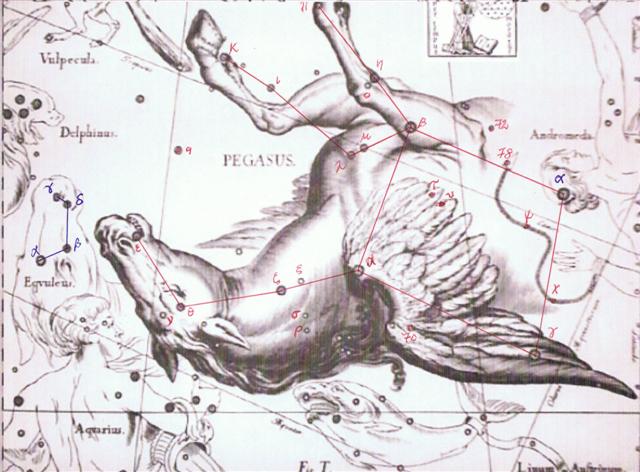
|

























.jpg)










.jpg)








